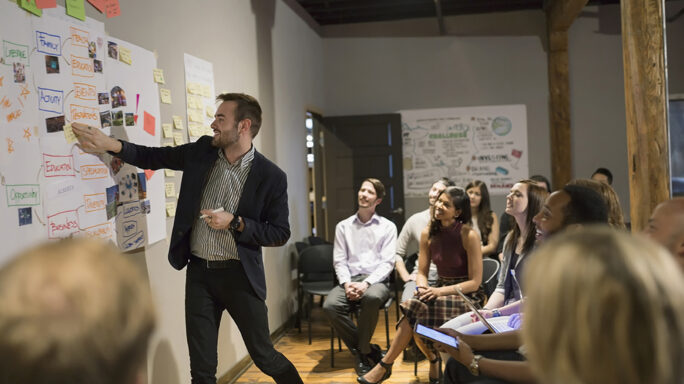Managing people
Workforce visibility: What every HR leader should know

How many people work in your business? It’s a simple question, but one many Australian HR professionals are hard-pressed to answer without several weeks of research. And in a fast-changing business environment, that’s several weeks too long.
Having consistent, accurate, and up-to-date information about your workforce is essential. It allows your business to be more efficient, responsive, and effective.But having the right processes is only part of the story. Global research firm Aberdeen Group says the value of workforce visibility is in “the ability to define the talent required by business needs in terms of skills, behaviours, and attributes.”
Essentially, it’s the acknowledgement that obstacles are overcome through different skillsets. HR leaders need to be able to see the make-up of their organisation to match individuals with different goals.
Free research report: The changing face of HR
Seismic shifts in the way organisations operate, work, and manage their people are occurring. We surveyed 500+ HR leaders to discover how they are responding.
Uncover insights on how to stay ahead and transform HR from a process focused function to a people driven business.

Making people tick
Workforce visibility will help you become a more efficient HR professional… and a better manager. It helps you understand the needs and desires of your people and find ways of empowering them to contribute more to your business.
On the other hand, bad people management shoehorns individuals into roles or teams to fill a resource gap. It’s detrimental in the long-term because it disengages people. Employees who feel involved in their work are less likely to consider leaving their current position for a raise.
When offered a 20% raise elsewhere, only 37% of engaged employees would consider leaving, whereas 54% of unengaged employees would leave. So it’s vital you know what makes your people tick.
Efficient environments
Businesses need to design better working environments, to help employees become engaged and effective.
A Gallup poll reveals only 24% of Australian and New Zealand employees feel engaged at work, while 60% don’t feel engaged, and 16% feel actively disengaged.Many top workplaces in Silicon Valley now include everything from go-karts and climbing walls to volleyball courts. These may seem like novelty ideas, but they can stir creative juices and attract top talent.
Coupling a positive environment with the right training and motivation programmes can reduce staff turnover costs too.
“People care if you take a genuine interest in their future. Development planning should be something a manager takes a real personal interest in – not an HR-driven mandate,” says Forbes contributor Victor Lipman.
Building for the future
Understanding your workforce will help you plan more effectively for the future. It helps you identify the natural leaders with the ambition to get to the top.It also helps you think more clearly about business strategy and the direction your business is heading.
Don’t just think about the skills you need now, think about what your business will need in five or ten years’ time. Then, start training your star performers to fill these roles.
This way you can support the aspirations of top talent, place the most important people in your business at the heart of its future, and reduce the cost of recruiting.
People are your core asset. With the right technology solutions, organisations can gain greater visibility into people strategies across their operations. It’s about HR having the necessary information to guide workforce planning, ensuring the right resources are in place, and delivering a great employee experience that retains and engages your best talent.
Free research report: The changing face of HR
Seismic shifts in the way organisations operate, work, and manage their people are occurring. We surveyed 500+ HR leaders to discover how they are responding.
Uncover insights on how to stay ahead and transform HR from a process focused function to a people driven business.







